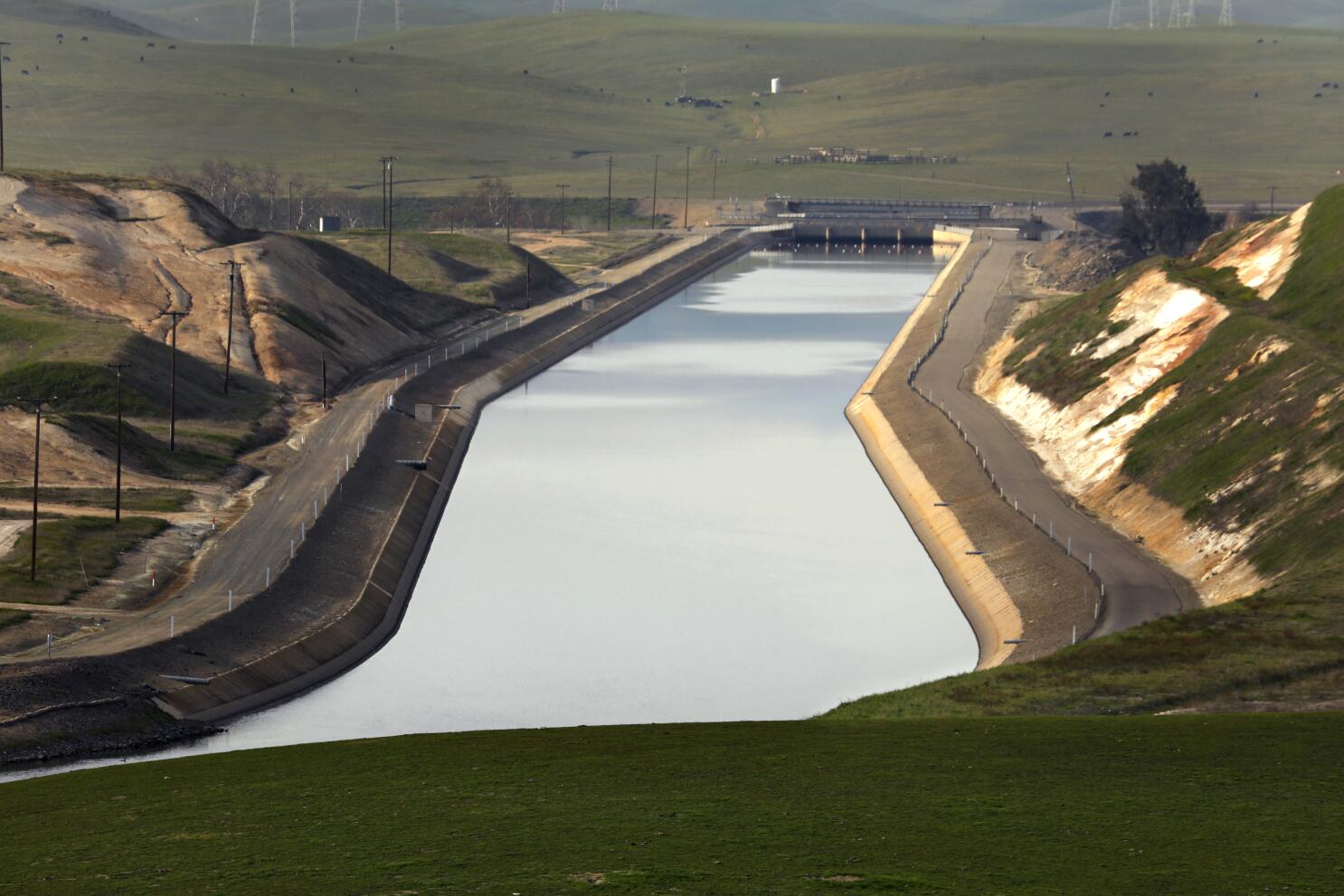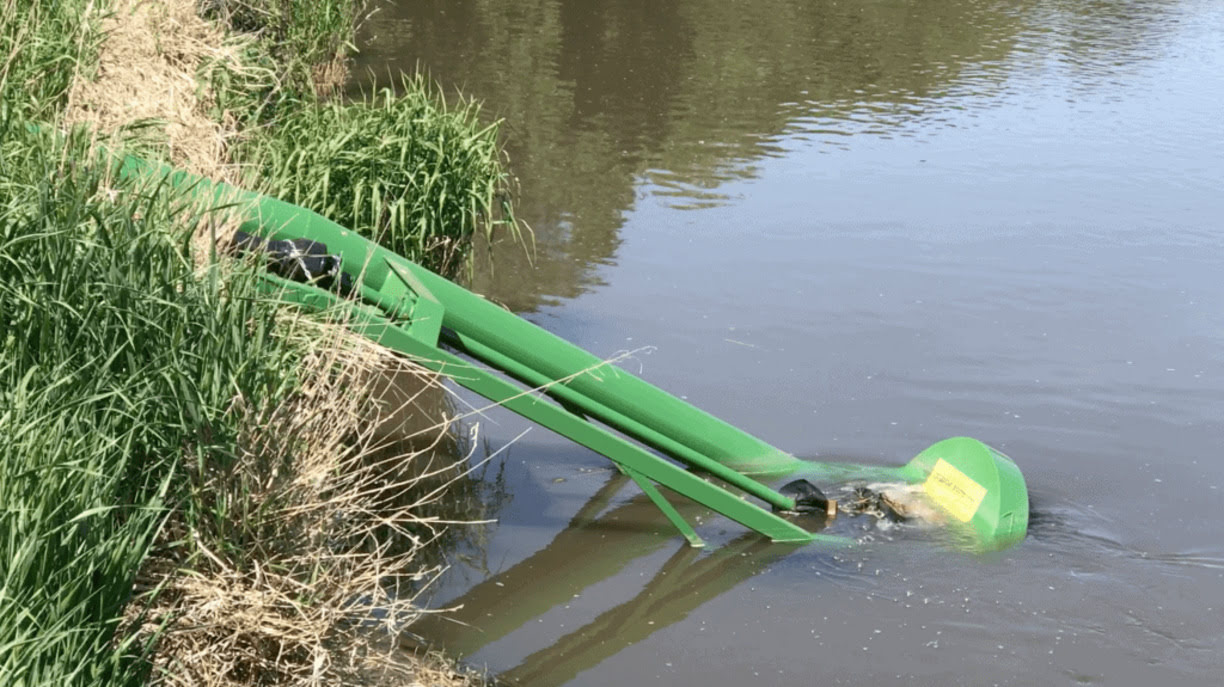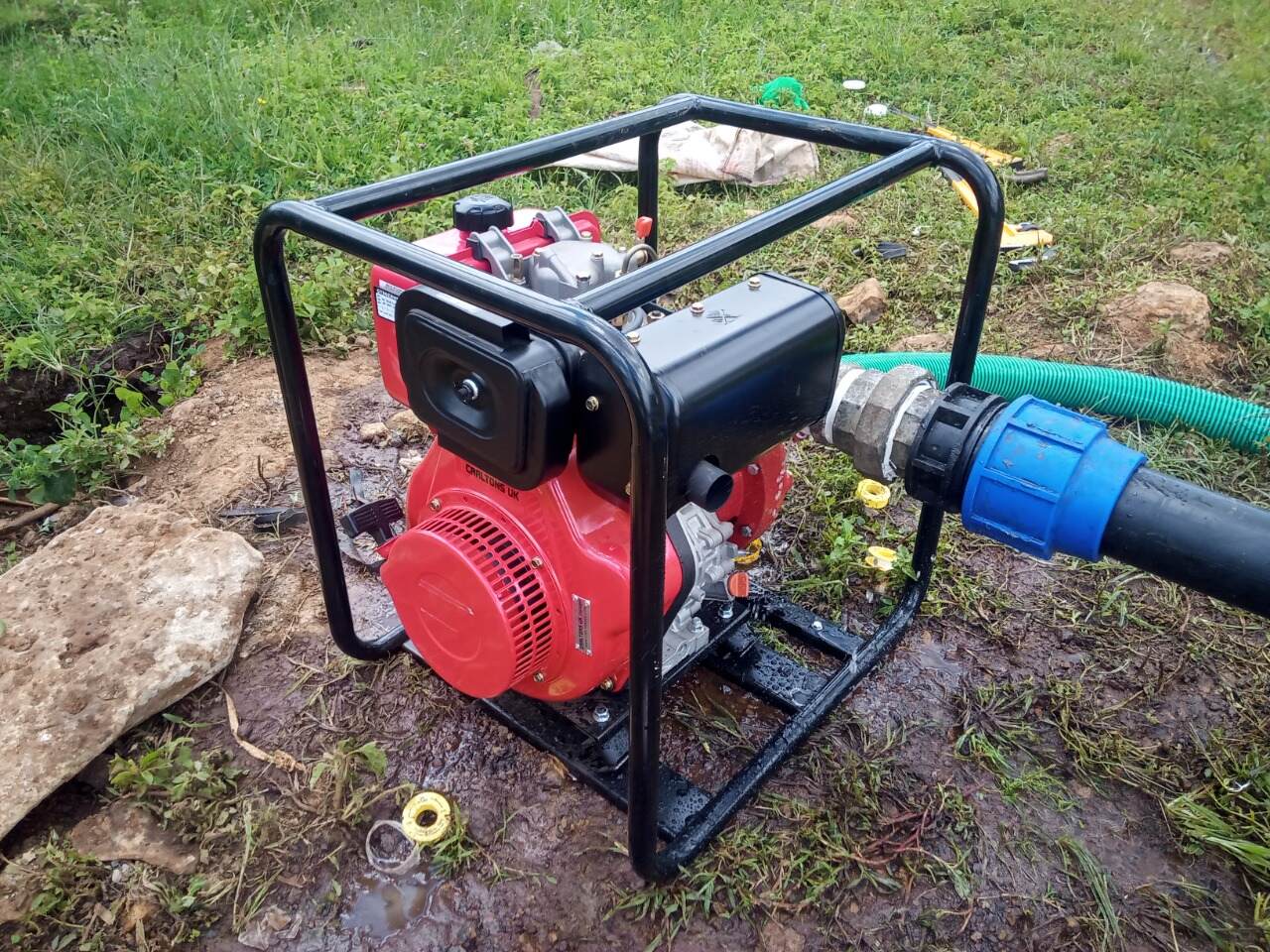Home>Gardening News and Trends>Latest News>What Is The Source Of Most Irrigation Water In The Midwest


Latest News
What Is The Source Of Most Irrigation Water In The Midwest
Published: November 16, 2023
Discover the latest news on the source of most irrigation water in the Midwest. Stay informed and learn about the key factors influencing irrigation in this region.
(Many of the links in this article redirect to a specific reviewed product. Your purchase of these products through affiliate links helps to generate commission for Chicagolandgardening.com, at no extra cost. Learn more)
Table of Contents
Introduction
Welcome to the Midwest, the heartland of America, where vast fields of crops stretch as far as the eye can see. The success of agriculture in this region is largely attributed to the availability of irrigation water. As we delve into the topic of irrigation in the Midwest, we begin to unravel the importance of having a sustainable and reliable source of water for crop growth.
Irrigation plays a crucial role in enhancing agricultural productivity, especially in areas with limited rainfall or erratic precipitation patterns. By providing essential water to crops, irrigation helps farmers overcome water stress and promotes crop growth throughout the growing season. However, the availability and source of irrigation water can vary widely depending on the region and its unique geographical features.
In this article, we will explore the different sources of irrigation water commonly used in the Midwest, with a particular focus on the primary source that farmers rely upon for their irrigation needs. We will also discuss the factors that influence the choice of irrigation water sources and address some of the challenges and concerns associated with these sources.
Understanding the source of irrigation water in the Midwest is essential in ensuring the sustainability of agricultural practices in the region. By exploring the various water sources and their implications, we can gain insights into how farmers cope with water scarcity and make informed decisions to ensure the continued success of the agricultural industry in the Midwest.
Overview of Irrigation in the Midwest
The Midwest region of the United States is known for its vast agricultural landscapes and high crop yields. This productivity is largely made possible by the practice of irrigation, which provides essential water to crops throughout the growing season. The Midwest, with its diverse climate and soil types, relies on irrigation to supplement rainfall and ensure optimal growing conditions for a wide range of crops.
There are several key aspects to consider when discussing irrigation in the Midwest. Firstly, the region is home to a significant number of agricultural operations, ranging from small family farms to large-scale commercial enterprises. These farms cultivate a diverse array of crops, including corn, soybeans, wheat, and vegetables.
The second important aspect is the diversity in irrigation methods employed in the region. Farmers in the Midwest utilize various irrigation techniques, including center pivots, drip systems, and furrow irrigation, depending on their specific needs and available resources. This allows for efficient water distribution and irrigation tailored to the individual requirements of different crops.
Furthermore, the Midwest exhibits a range of climates, from humid subtropical to humid continental, and there can be variations in the availability of rainfall across the region. Some areas receive sufficient rainfall to support crop growth, while others experience periodic droughts, necessitating the use of irrigation as a means to secure water for agriculture.
In recent years, there has been an increased focus on sustainable irrigation practices in the Midwest. This includes the adoption of precision irrigation techniques, which utilize advanced technologies to optimize water use efficiency and reduce environmental impact. Additionally, there is a growing interest in the use of alternative sources of water for irrigation, such as recycled and treated wastewater, to reduce dependence on freshwater sources.
Overall, irrigation plays a vital role in the agriculture of the Midwest, ensuring consistent crop production and food security. By understanding the overview of irrigation practices in this region, we can appreciate the efforts made by farmers to manage water resources effectively while maintaining the sustainability of agricultural operations.
Common Sources of Irrigation Water
Irrigation water can come from various sources, each with its own advantages and considerations. In the Midwest, farmers utilize several common sources of water for their irrigation needs. Let’s explore some of these sources:
- Surface Water: Surface water is one of the most widely used sources of irrigation water in the Midwest. It refers to water from rivers, lakes, and reservoirs. Surface water is often abundant, especially during periods of heavy rainfall. Farmers can divert this water through canals, ditches, or pipes to their fields for irrigation.
- Groundwater: Groundwater is another essential source of irrigation water in the Midwest. It is found beneath the earth’s surface in underground aquifers. Farmers extract groundwater using wells, which can be shallow or deep, depending on the depth of the water table. Groundwater offers a relatively reliable and consistent source of water, as it is less dependent on external factors such as rainfall.
- Rainwater: While rainfall is not typically considered a direct source of irrigation water, it plays a crucial role in replenishing surface water and groundwater resources. In some cases, farmers may have storage systems in place to collect and use rainwater for irrigation. This can be particularly beneficial during periods of limited rainfall or drought conditions.
- Recycled and Treated Wastewater: As water resources become increasingly scarce, some farmers in the Midwest are exploring alternative sources of water for irrigation, such as recycled and treated wastewater. This involves treating wastewater from municipalities or industrial facilities to remove impurities and make it suitable for agricultural use. Recycled water can help reduce reliance on freshwater sources and promote sustainability in irrigation practices.
- Captured and Stored Surface Runoff: Farmers in the Midwest often implement strategies to capture and store surface runoff from rain events. This involves constructing reservoirs or ponds to collect excess water, which can then be used for irrigation purposes during drier periods. This method helps conserve water and optimize its use in agricultural operations.
Each source of irrigation water has its own considerations and implications. Farmers in the Midwest evaluate factors such as water availability, quality, cost, and local regulations when deciding which source to utilize for their irrigation needs. Additionally, sustainable water management practices, such as efficient irrigation techniques and proper water distribution systems, are essential to maximize water usage and minimize waste.
By understanding the common sources of irrigation water in the Midwest, farmers can make informed choices and adapt their practices to ensure the ongoing viability and sustainability of their agricultural operations.
The Primary Source of Irrigation Water in the Midwest
When it comes to irrigation in the Midwest, one source stands out as the primary provider of water for crop irrigation: groundwater. Groundwater plays a crucial role in sustaining agricultural practices in the region and is the preferred source for many farmers.
The Midwest is blessed with vast underground aquifers that hold significant amounts of water. These aquifers, such as the High Plains Aquifer (which includes the famous Ogallala Aquifer), are recharged over time by rainfall and snowmelt. This underground water source offers several advantages that make it the preferred choice for irrigation.
First and foremost, groundwater is relatively reliable and consistent. Unlike surface water, which can fluctuate due to variations in rainfall, groundwater is available year-round, providing a stable supply of water for irrigation. This consistency is particularly valuable during dry periods or droughts when surface water sources may be scarce or unreliable.
Furthermore, groundwater is often of high quality, generally requiring less treatment or filtration than surface water. This reduces the cost and complexity associated with removing impurities before using the water for irrigation. Many farmers find that the natural filtration that occurs as water percolates through the ground results in cleaner and more suitable water for their crops.
Another advantage of groundwater is its accessibility. Wells can be strategically located across the Midwest, allowing farmers to access groundwater from beneath their fields. This localized access simplifies and shortens the distribution process, reducing the need for extensive infrastructure to transport water over long distances.
However, it is important to note that groundwater usage comes with its own set of concerns. Excessive pumping can lead to depletion of aquifers, causing water tables to drop and wells to dry up. Overuse of groundwater resources can have long-term negative consequences, including land subsidence and saltwater intrusion in coastal regions.
Farmers in the Midwest recognize the importance of responsible water management and sustainable practices to ensure the long-term viability of groundwater resources. They employ precision irrigation techniques and water conservation measures to optimize water use and minimize waste. Additionally, research and technology advancements continue to improve the understanding and monitoring of groundwater levels, aiding in the implementation of effective water management strategies.
In summary, groundwater is the primary source of irrigation water in the Midwest region. Its reliability, quality, and accessibility make it the preferred choice for many farmers. However, responsible and sustainable practices are essential to ensure the continued availability of this vital resource for future generations.
Factors Affecting the Choice of Irrigation Water Source
The choice of irrigation water source in the Midwest is influenced by several factors specific to each farm and region. Farmers carefully consider these factors to determine which source best suits their irrigation needs. Let’s explore some of the key factors that affect the choice of irrigation water source:
Water Availability: The availability of water is a critical factor in determining the irrigation water source. Farmers assess the local water resources, including surface water bodies, groundwater aquifers, and rainfall patterns. They consider the quantity and reliability of water from these sources, as well as the potential for water scarcity during dry periods or droughts.
Water Quality: Another factor that influences the choice of irrigation water source is the quality of the water. Farmers assess the chemical composition, mineral content, and potential for contaminants in the available water sources. They consider the impact of water quality on crop health, soil fertility, and irrigation system longevity. In some cases, water treatment processes may be required to improve water quality before using it for irrigation.
Crop Requirements: Different crops have varying water needs and sensitivities to water quality. Farmers take into account the specific water requirements of the crops they cultivate. Some crops may thrive with lower-quality water, while others may require a cleaner water source. Additionally, the cultivation methods and irrigation systems used for specific crops play a role in determining the suitability of the water source.
Infrastructure Availability: The infrastructure required to access and distribute water can influence the choice of irrigation water source. Farmers consider the availability and cost of wells, pipes, irrigation systems, and storage facilities. They also evaluate the feasibility of setting up infrastructure to transport water from the source to their fields. The proximity of the water source and the ability to efficiently distribute water play a significant role in the decision-making process.
Regulatory and Legal Considerations: Local regulations and laws may impact the choice of irrigation water source. Farmers must comply with water rights, permits, restrictions, and environmental regulations governing the use of different water sources. This includes restrictions on water withdrawal rates, allocation limits, and water usage reporting. Farmers navigate these regulations to ensure compliance and sustainable water management practices.
Economic Factors: The economic feasibility of utilizing various water sources is also a critical consideration. Farmers evaluate the costs associated with accessing, extracting, and treating the water. They weigh these costs against the potential benefits and returns of using the water for irrigation. This analysis includes factors such as energy costs, equipment maintenance, labor requirements, and the potential for crop yield improvements.
By taking into account these factors, farmers in the Midwest can make informed decisions about their choice of irrigation water source. They strive to balance water availability, quality, crop requirements, infrastructure considerations, regulatory requirements, and economic factors to ensure sustainable and efficient irrigation practices.
Challenges and Concerns Associated with Irrigation Water Sources
While irrigation is crucial for agricultural success in the Midwest, there are several challenges and concerns associated with the various irrigation water sources. Farmers must navigate these issues to ensure the sustainability and efficiency of their irrigation practices. Let’s explore some of the notable challenges and concerns:
Water Scarcity: Water scarcity is a significant challenge in many regions, including the Midwest. In periods of limited rainfall or drought, water sources can become depleted, impacting both surface water and groundwater availability. Farmers must carefully manage their water resources to ensure a consistent and sustainable supply for irrigation.
Depletion of Aquifers: Excessive groundwater pumping can lead to the depletion of aquifers, causing water levels to drop. Overuse of groundwater resources can result in wells drying up and land subsidence. It is crucial for farmers to monitor and manage groundwater usage to prevent long-term damage to this essential water source.
Water Quality Concerns: Water quality can be a concern in some irrigation water sources. Surface water may contain pollutants from industrial activities or agricultural runoff, requiring treatment and filtration before use. High levels of salts, minerals, or contaminants in groundwater can negatively impact crops and soil health. Farmers must be proactive in testing and treating water to ensure its suitability for irrigation purposes.
Infrastructure and Distribution Limitations: The implementation and maintenance of irrigation infrastructure pose challenges for farmers. Accessing and distributing water from different sources may require significant investments and ongoing maintenance. Limited financial resources or lack of available technology can hinder efficient water distribution, impacting the effectiveness of irrigation practices.
Environmental Impact: The extraction and use of water for irrigation can have environmental consequences. Overuse of water resources can lead to habitat loss, biodiversity depletion, and degradation of aquatic ecosystems. Farmers must strive for sustainable water management practices to minimize the ecological footprint of irrigation activities.
Regulatory Compliance: Agricultural operations must adhere to local regulations and permits governing the use of irrigation water sources. Compliance with water rights, permits, and restrictions can be complex and time-consuming. Farmers must navigate the legal requirements and reporting obligations associated with their chosen water sources.
Climate Change Resilience: Climate change poses additional challenges to irrigation water sources in the Midwest. Changing rainfall patterns, increased frequency of extreme weather events, and rising temperatures can impact water availability and quality. Farmers need to adapt their irrigation practices to build resilience and mitigate the effects of climate change.
Addressing these challenges and concerns requires collaboration between farmers, policymakers, researchers, and water resource management organizations. It is crucial to promote sustainable water management practices, invest in infrastructure development, and utilize innovative technologies to ensure the availability and quality of irrigation water sources for future generations of farmers.
Conclusion
Irrigation water sources play a vital role in ensuring the success and sustainability of agriculture in the Midwest. Farmers in the region rely on a variety of sources, with groundwater emerging as the primary source for irrigation due to its reliability, quality, and accessibility. However, careful consideration of factors such as water availability, quality, crop requirements, infrastructure, regulations, and economics is necessary when choosing the appropriate water source for irrigation.
The Midwest faces various challenges and concerns associated with irrigation water sources. These include water scarcity, depletion of aquifers, water quality issues, infrastructure limitations, environmental impact, regulatory compliance, and the need to build resilience in the face of climate change. Addressing these challenges requires a collaborative effort from farmers, policymakers, researchers, and water resource management organizations.
By adopting sustainable water management practices, investing in infrastructure development, utilizing advanced technologies, and adhering to regulations, farmers in the Midwest can ensure the efficient use of irrigation water while minimizing environmental impact. Moreover, exploring alternative water sources, such as recycled wastewater, and implementing precision irrigation techniques can strengthen water resilience and reduce dependence on freshwater sources.
As the Midwest continues to be a vital agricultural hub, it is crucial to prioritize responsible and sustainable irrigation practices. By managing water resources effectively and making informed choices about irrigation water sources, farmers can promote long-term agricultural productivity, protect the environment, and contribute to food security in the region.
Ultimately, the success of irrigation in the Midwest hinges on the ability to balance the needs of agriculture with the preservation of water resources for future generations. Through continued innovation and a commitment to sustainability, the Midwest can maintain and enhance its position as a thriving agricultural powerhouse.








